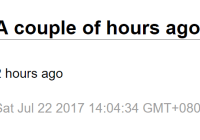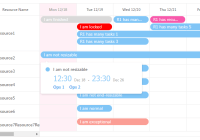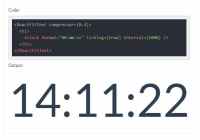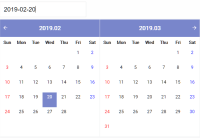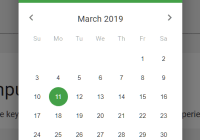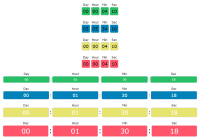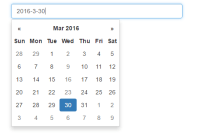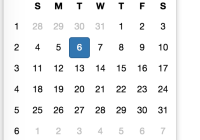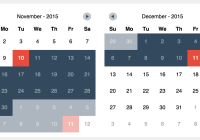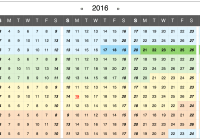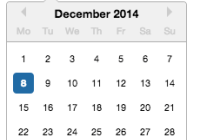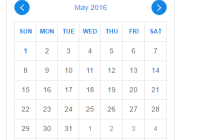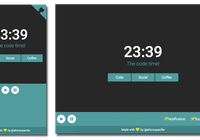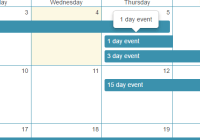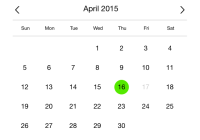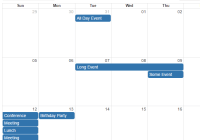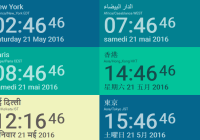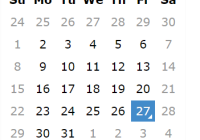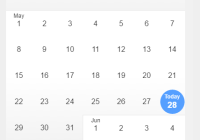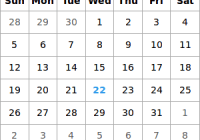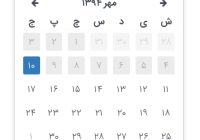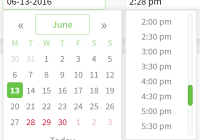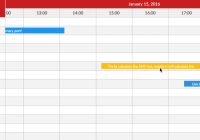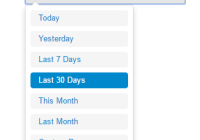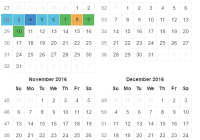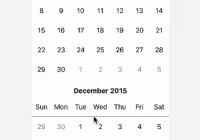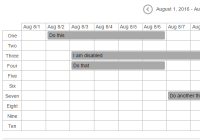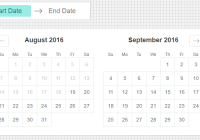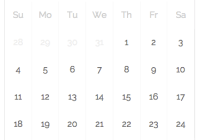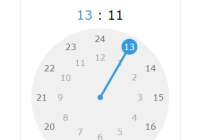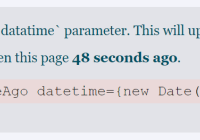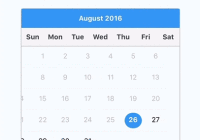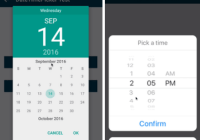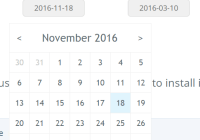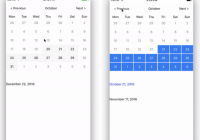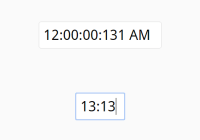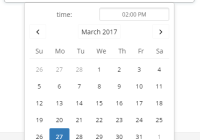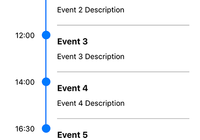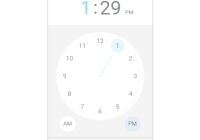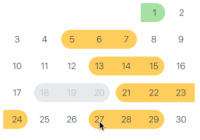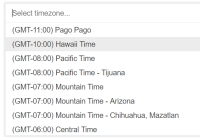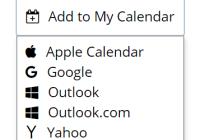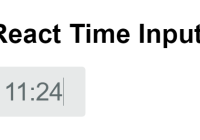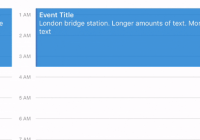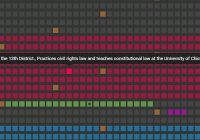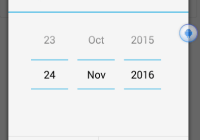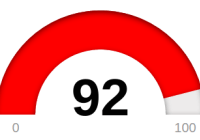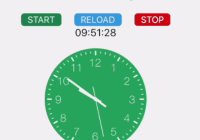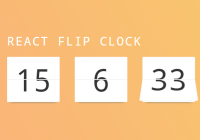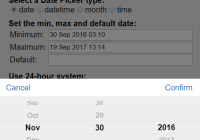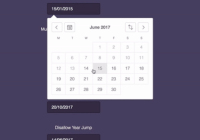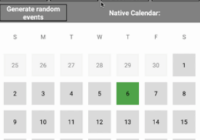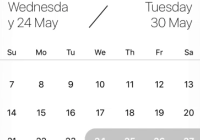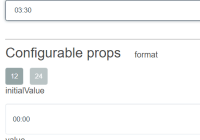react-time-ago
International relative date/time formatter for React (both for past and future dates).
Formats a date/timestamp to:
- just now
- 5m
- 15 min
- 25 minutes
- an hour ago
- 1 mo.
- 5 years ago
- … or whatever else
Install
$ npm install react-time-ago --saveUse
This library exports two components: a "base" component and a "custom-tooltip" component:
// "base" component. import ReactTimeAgo from 'react-time-ago' // "custom-tooltip" component. // Requires React >= 16. import ReactTimeAgo from 'react-time-ago/tooltip'Both components use javascript-time-ago library internally for generating localized relative time strings. When react-time-ago package is installed the javascript-time-ago package is installed automatically along with it. At runtime the javascript-time-ago library must be initialized in the application's code with the desired locales (by default no locales are initialized):
./src/index.js
import JavascriptTimeAgo from 'javascript-time-ago' // The desired locales. import en from 'javascript-time-ago/locale/en' import ru from 'javascript-time-ago/locale/ru' // Initialize the desired locales. JavascriptTimeAgo.locale(en) JavascriptTimeAgo.locale(ru)Now <ReactTimeAgo/> component can be used on any page. The component refreshes itself every minute (by default).
./src/LastSeen.js
import React from 'react' import ReactTimeAgo from 'react-time-ago' export default function LastSeen({ date }) { return ( <div> Last seen: <ReactTimeAgo date={date}/> </div> ) }<ReactTimeAgo/> component takes an optional locale property (is "en" by default):
// Displays relative time in Russian. <ReactTimeAgo date={date} locale="ru"/>Customization
ReactTimeAgo component accepts a timeStyle property which can be:
See javascript-time-ago docs for more info on how to customize the generated output.
Tooltip
The "custom-tooltip" component uses react-responsive-ui's <Tooltip/> component internally that displays itself "on mouse over" on desktops and "on touch down" on mobile devices. The behavior of the tooltip is similar to that of the HTML title attribute which displays a tooltip "on mouse over". The difference is that the "custom-tooltip" component also displays the tooltip "on touch down" on mobile devices while the HTML title attribute doesn't handle mobile users in any way. That's the primary reason why one may choose the "custom-tooltip" component over the "base" (default) one.
The tooltip text is a verbose date label. If Intl is supported (which is the case for all modern web browsers) then Intl.DateTimeFormat is used for formatting the label ("Thursday, January 11, 2018, 9:53:00 PM"). Otherwise, it falls back to date.toString().
import ReactTimeAgo from 'react-time-ago/tooltip' // Include tooltip CSS: import 'react-time-ago/Tooltip.css' // Also make sure that `document.body` has no `margin` // otherwise tooltip `left` and `top` positions will be slightly off. // Shows a verbose date tooltip on mouse over and on touch down. <ReactTimeAgo date={date}/>.rrui__tooltip { /* Display the tooltip above the content. */ margin-top : -0.5em; background-color : black; color : white; } .rrui__tooltip--after-show { opacity : 0.85; } .rrui__tooltip--before-hide { opacity : 0; }The "custom-tooltip" component takes an optional tooltipClassName property for styling the tooltip.
Future
When given future dates it produces the corresponding output, e.g. "in 5 minutes", "in a year", etc.
Props
// The `date` (or `timestamp`). // E.g. `new Date()` or `1355972400000`. date : PropTypes.oneOfType([ PropTypes.instanceOf(Date), PropTypes.number ]).isRequired, // Preferred locale. // Is 'en' by default. // E.g. 'ru-RU'. locale : PropTypes.string, // Preferred locales (ordered). // Will choose the first suitable locale from this list. // (the one that has been initialized) // E.g. `['ru-RU', 'en-GB']`. locales : PropTypes.arrayOf(PropTypes.string), // Date/time formatting style. // E.g. 'twitter', 'time', or an object. // See `javascript-time-ago` docs for more info. timeStyle, // Whether HTML `tooltip` attribute should be set // to verbosely formatted date (is `true` by default). // Set to `false` to disable the native HTML `tooltip`. tooltip : PropTypes.bool.isRequired, // An optional function returning what will be output in the HTML `title` tooltip attribute. // (by default it's `(date) => new Intl.DateTimeFormat(locale, {…}).format(date)`) formatVerboseDate : PropTypes.func, // `Intl.DateTimeFormat` format for the HTML `title` tooltip attribute. // Is used when `formatVerboseDate` is not specified. // By default outputs a verbose date. verboseDateFormat : PropTypes.object, // How often to update all `<ReactTimeAgo/>` elements on a page. // (is once in a minute by default) updateInterval : PropTypes.number, // Set to `false` to disable automatic refresh of // `<ReactTimeAgo/>` elements on a page as time goes by. // (is `true` by default) tick : PropTypes.bool, // (advanced) // React Component to wrap the resulting `<time/>` React Element. // Receives `verboseDate` and `children` properties. // `verboseDate` can be used for displaying verbose date label // in an "on mouse over" (or "on touch") tooltip. // See "./source/ReactTimeAgoWithTooltip.js" for usage example. container : PropTypes.func, // CSS `style` object. // E.g. `{ color: white }`. style : PropTypes.object, // CSS class name. className : PropTypes.string